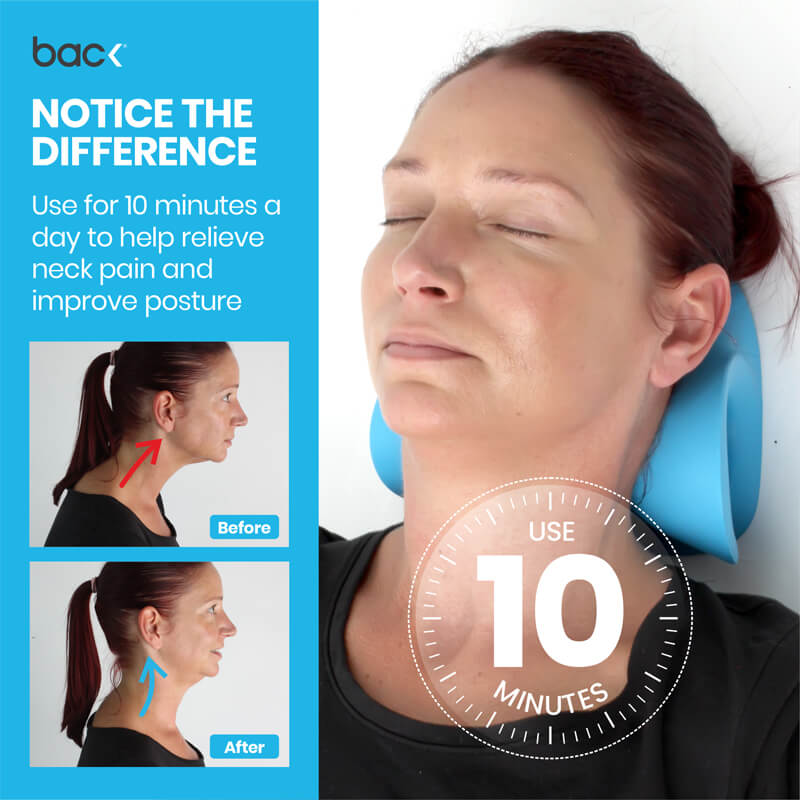Discover Neck Cloud: A Basic Service for Neck Discomfort and Tension
Discover Neck Cloud: A Basic Service for Neck Discomfort and Tension
Blog Article
Neck Pain in the Work Environment: Determining Danger Aspects and Carrying Out Ergonomic Solutions
Neck discomfort in the workplace is a prevalent concern that can impact staff member well-being and efficiency. By recognizing the different risk elements adding to neck pain and executing ergonomic options, companies can create a much more favorable workplace. Determining these variables is essential in establishing targeted approaches to reduce discomfort and protect against future injuries. Dealing with ergonomic issues not just boosts staff member health yet additionally promotes overall task complete satisfaction and performance.
Common Sources Of Neck Pain
Neck discomfort in the workplace is a widespread concern that can be associated to several usual reasons. One of the primary culprits is poor stance, which usually arises from prolonged durations of sitting incorrectly at a workdesk or workstation. This can bring about strain on the neck muscles and joints, triggering pain and pain. In addition, repetitive movements such as constant flexing, twisting, or reaching can likewise add to neck pain with time. Stressing the neck by holding it in an uncomfortable position for extended periods, like supporting the phone between the ear and shoulder, can aggravate the problem (neck cloud).

Ergonomic Danger Factors
Poor ergonomics in the office can substantially add to neck discomfort among workers. Variables such as incorrect workdesk height, poor chair support, and uncomfortable positioning of computer system screens can all play a duty in the development of neck pain. When staff members are forced to rest for extended periods ready that strain their neck muscle mass, it can bring about stiffness, discomfort, and much more severe bone and joint problems with time.
Additionally, bad ergonomic techniques can lead to staff members adopting uncomfortable stances while working, such as craning their necks to see a computer display or getting to annoyingly for a mouse or keyboard. neck cloud. These repeated activities and unnatural settings can place undue stress on the neck and bordering muscles, leading to pain and lowered productivity

Desk Configuration Recommendations
To reduce the risk site link of neck pain and pain, there are numerous workdesk configuration recommendations that employees should take into consideration. Make certain that the computer system screen is positioned at eye degree to stop straining the neck by looking up or down.
It is also important to have ample illumination to decrease eye strain, as scrunching up your eyes or leaning ahead can lead to neck stress. Arrange the desk layout to maintain often used things within arm's reach, limiting the need for recurring twisting or getting to motions. By implementing these workdesk configuration recommendations, workers can create an extra ergonomic work area that sustains neck health and wellness and reduces the threat of developing occupational neck pain.
Extending and Exercise Tips
To keep versatility and lower muscle mass stress in the work environment, including stretching and workout routines can be helpful for general health and efficiency. Simple desk-friendly stretches can assist reduce neck discomfort and stop stiffness. Neck rolls, shoulder shrugs, and mild side-to-side neck stretches work in alleviating stress. Additionally, integrating workouts like chin tucks, shoulder blade squeezes, and top back stretches can assist reinforce muscles that sustain excellent position.
Setting reminders or using apps that prompt activity can assist establish a regular extending routine. By focusing on these activities, you can improve your physical wellness, minimize the danger of neck pain, and improve your general productivity in the office.
Importance of Regular Breaks
In a fast-paced workplace where needs can add to physical stress like neck pain, developing a regimen that emphasizes the significance of routine breaks is vital (neck cloud). Taking regular breaks throughout the workday is necessary for stopping and relieving neck pain. Prolonged durations of sitting or repetitive jobs can result in muscle stress and tightness in the neck and shoulders. By incorporating brief breaks into the work regular, employees can lower the danger of developing neck discomfort and enhance total comfort and productivity.
These breaks can additionally serve as an opportunity for workers to practice leisure strategies or mild neck stretches, further promoting bone and joint wellness. Executing a culture that values and focuses on routine breaks can have a considerable impact on lowering neck pain and enhancing overall health in the workplace.
Conclusion
In final thought, attending to ergonomic have a peek at this website danger aspects and applying correct workstation arrangements are essential in decreasing neck pain in the workplace. By promoting excellent stance, providing ample continue reading this assistance, and motivating routine breaks and stretches, organizations can create a healthier and more effective job atmosphere for workers. Prioritizing employee health via ergonomic options is crucial to stopping discomfort and improving total work environment contentment.
Neck discomfort in the workplace is a prevalent concern that can impact employee health and performance. By determining and addressing these usual reasons of neck pain in the office, employers can take aggressive steps to create an extra comfy and ergonomic work setting for their staff members.
Poor functional designs in the office can dramatically add to neck discomfort amongst employees. By applying these desk arrangement suggestions, employees can produce a more ergonomic work space that supports neck wellness and decreases the threat of establishing occupational neck pain.
Neck rolls, shoulder shrugs, and mild side-to-side neck stretches are effective in soothing tension.
Report this page